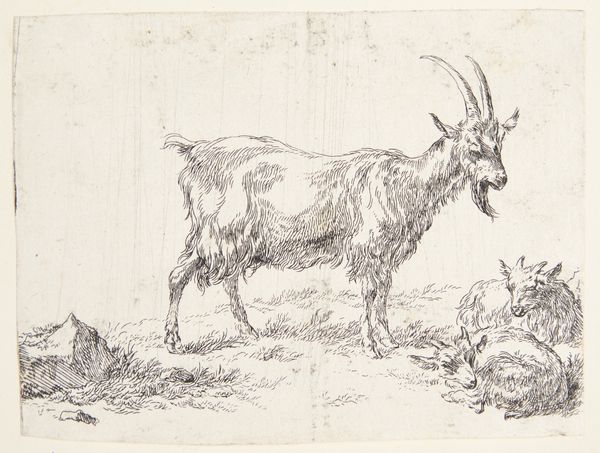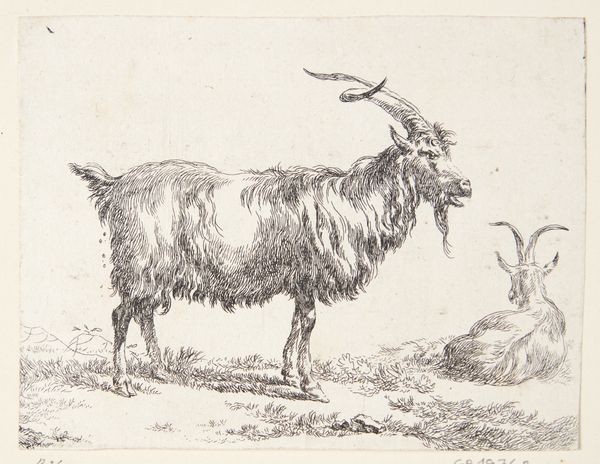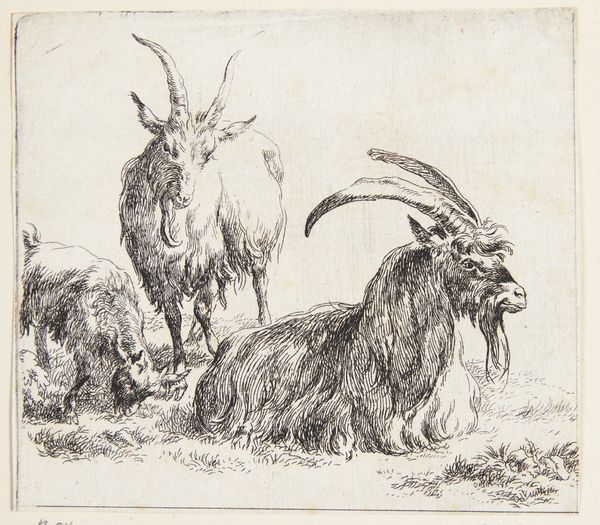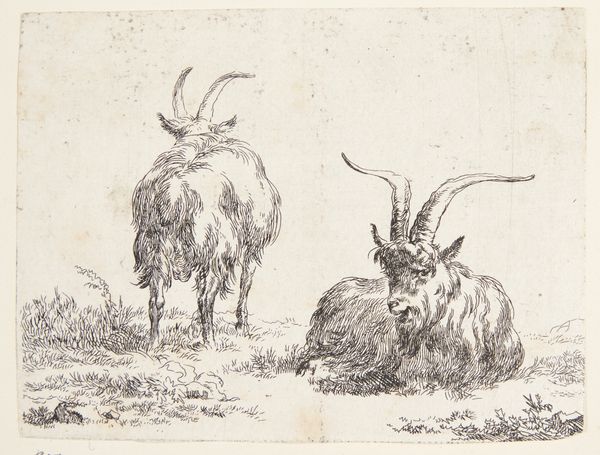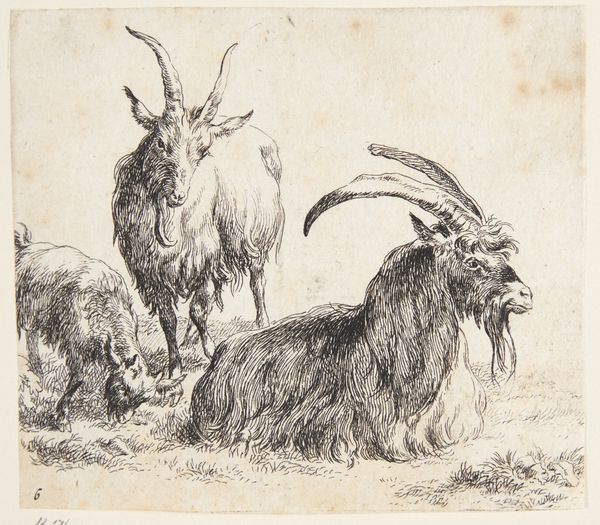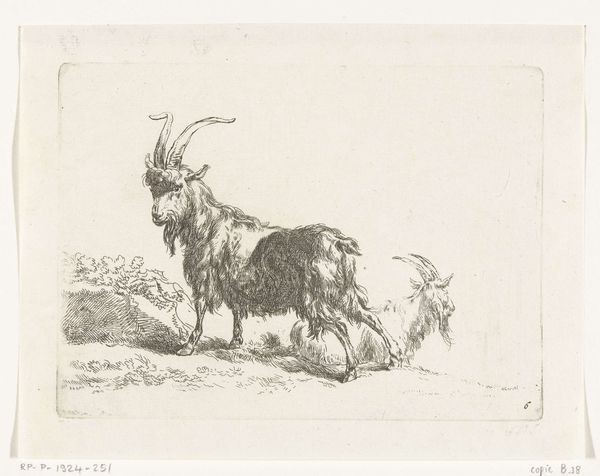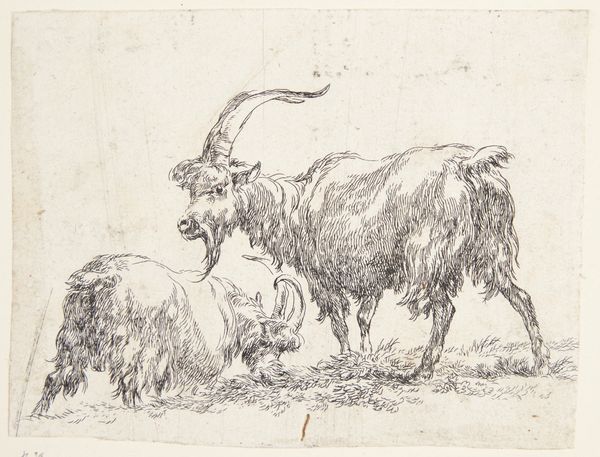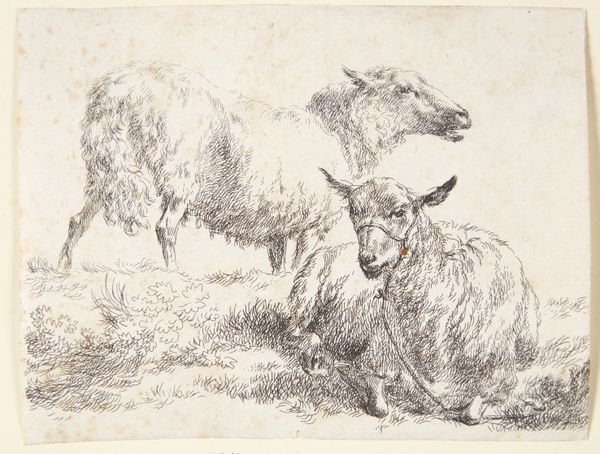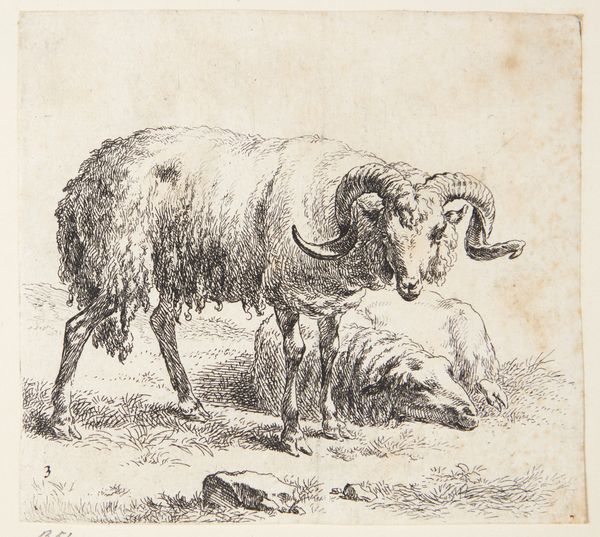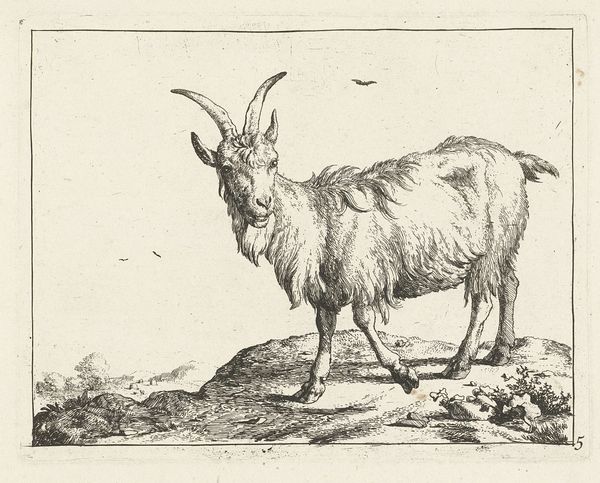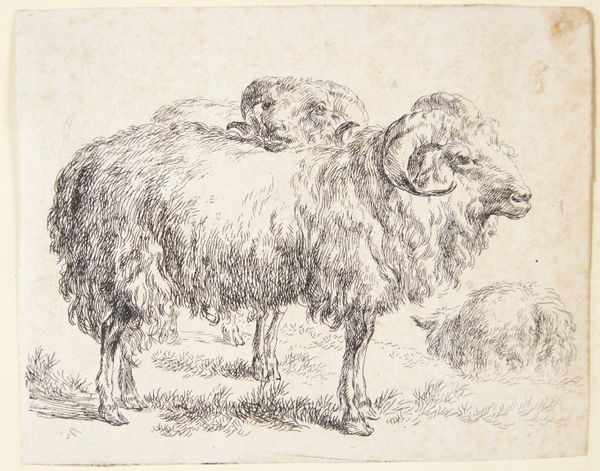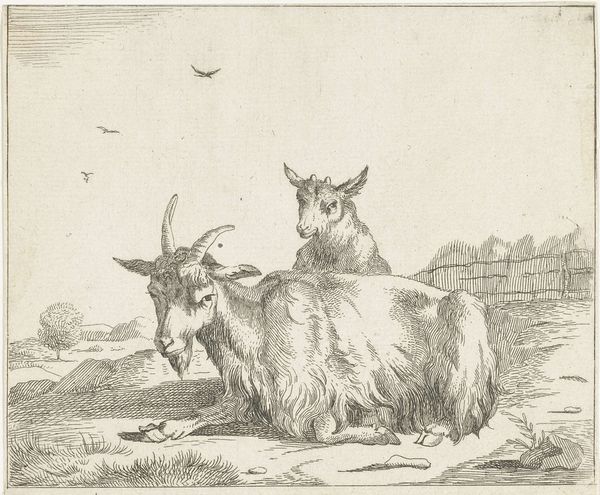
drawing, print, etching, ink
#
drawing
#
animal
#
dutch-golden-age
# print
#
etching
#
landscape
#
ink
Dimensions: 101 mm (height) x 130 mm (width) (bladmaal)
Editor: This etching by Nicolaes Berchem, titled *En stående og en liggende ged* or *A standing and a lying goat*, made sometime between 1620 and 1683, is pretty striking. The texture created with simple lines makes these goats seem almost fluffy! What aspects of Dutch Golden Age society might have influenced Berchem's choice to depict such a seemingly simple subject? Curator: It's fascinating how a simple image of goats can reflect complex social forces. During the Dutch Golden Age, there was a burgeoning merchant class, leading to a high demand for art. The art market expanded significantly, not just with large-scale history paintings but also genre scenes and animal studies, reflecting a shift in patronage and the embrace of more everyday subjects. Do you see a romanticized view of rural life here, a type of pastoral fantasy? Editor: I do. There's a definite idealization in the careful detail. What strikes me, though, is how these works also reinforced the idea of Dutch prosperity and control over their landscape, even its animal inhabitants. Is that a reach? Curator: Not at all! Think about the social function these images played. Landscapes and animal studies were ways for urban dwellers to connect, or perhaps reconnect, with the countryside, almost like owning a piece of the rural idyll. They were also commodities that testified to a nation’s economic success and expanding global trade networks. Can we interpret it as the commercialization of nature, where even something as rustic as a goat becomes a symbol of wealth? Editor: That makes a lot of sense. So Berchem's work isn't just about goats; it's about a rapidly changing society, its values, and how art played a role in shaping perceptions. Thanks! Curator: Exactly. The value lies in examining the piece as an artifact embedded in a specific historical and economic context. Looking closely at those goats gives us insights into a world far beyond the barnyard.
Comments
No comments
Be the first to comment and join the conversation on the ultimate creative platform.
